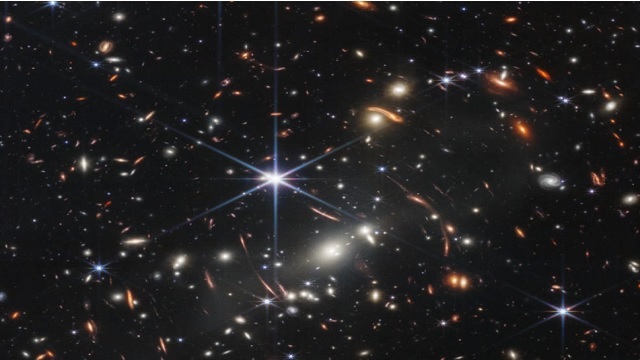New pictures from NASA’s powerful space telescope (James Webb Space Telescope Pictures) have been released, including one of a fading star with frothy blue and orange hues.

Check out this newly released historical film. US President Joe Biden unveiled this picture taken by NASA’s flagship mission, the James Webb Space Telescope (the successor to the Hubble Telescope). The specialty of this James Webb Space Telescope Pictures- actually the first picture? You’re looking at the incredible landscape of a distant universe 4.6 billion years ago, observing a cluster of galaxies. Additionally, this is the James Webb Telescope’s first full-color deep field image, as well as the deepest and sharpest infrared image of the distant universe in human history.
What is meant by ‘deepest’? A deep field image is when an astronomical image is taken over a long period of time on a specific part of the sky. In the case of this film, it is twelve and a half hours. And this is just the beginning. James Webb’s near-infrared camera can easily see what the Hubble telescope could not see with the astrologer’s ‘eye’. Pictured is the Galaxy Cluster SMACS 0723.
This entire picture is not even a speck of dust compared to the vastness of the universe. In NASA’s words, “This slice of the vast universe covers a patch of sky approximately the size of a grain of sand held at arm’s length by someone on the ground.” The mission of the James Webb Telescope is to determine the history and properties of the oldest galaxies in the Universe. James Webb’s 10-year planned mission (and 20 years of hoped-for mission) has just passed 6 months and 16 days today.
A handful of brighter and larger spikes are neighboring stars in our Milky Way galaxy, the Milky Way Galaxy. The rest of the points of light you see are all galaxies, not stars! The Hubble Telescope also took pictures of this part of the sky, see his comparison with James Webb in the comments!
When you look at the sun, you see the sun 8 minutes and 18 seconds ago. Never see the current sun. Because it takes 8 minutes and 18 seconds for the light to reach you. Simply put, it took 4.6 billion years for light to arrive from this galaxy cluster, or 4.6 billion years. (46,000,000,000!) Some of the countless distant dots in the background date back 13.5 billion or 13.5 billion years, which is the oldest light that has reached us. (Approximately 13.8 billion or 13.8 billion years since the birth of the universe) Of course, objects this far away should be blurry or impossible to see, but that’s where the magic of the James Webb Telescope comes in.
See, the image of many galaxies is slightly curved. This is space-time curvature! According to the General Theory of Relativity, space-time curvature is seen due to the gravity of the galaxy cluster at the center of the picture.
Another interesting thing to note is that the combined mass of this galaxy cluster is so unimaginably large that it acts as a gravitational lens, through which we see the tiny specks of light further back magnified. They are also an unseen galaxy! There are also countless planetary satellites.
What a terrible vastness of this universe!
Written by
Email: [email protected]

